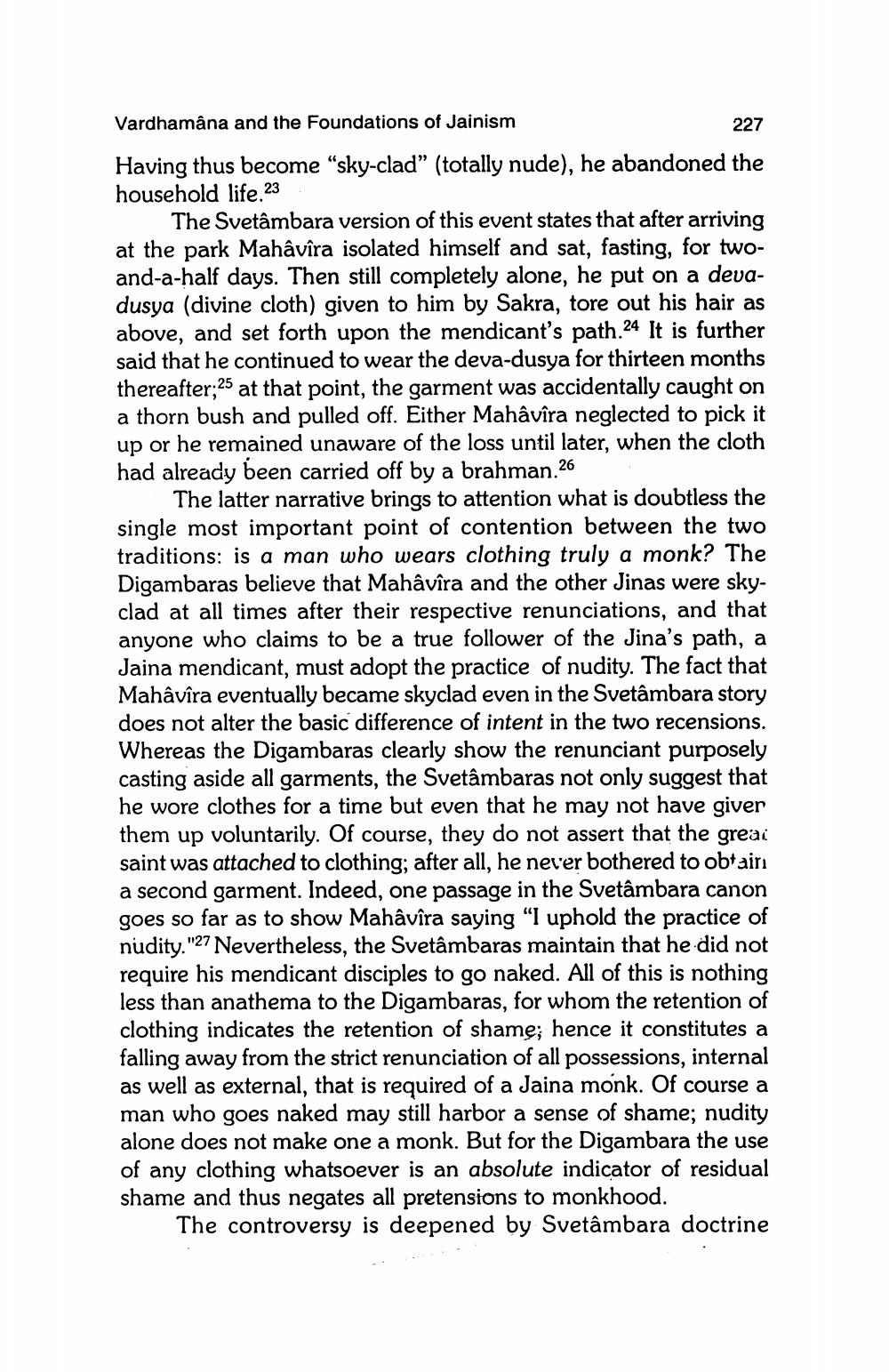________________
Vardhamâna and the Foundations of Jainism
227
Having thus become “sky-clad” (totally nude), he abandoned the household life.23
The Svetâmbara version of this event states that after arriving at the park Mahâvîra isolated himself and sat, fasting, for twoand-a-half days. Then still completely alone, he put on a devadusya (divine cloth) given to him by Sakra, tore out his hair as above, and set forth upon the mendicant's path.24 It is further said that he continued to wear the deva-dusya for thirteen months thereafter;25 at that point, the garment was accidentally caught on a thorn bush and pulled off. Either Mahâvîra neglected to pick it up or he remained unaware of the loss until later, when the cloth had already been carried off by a brahman.26
The latter narrative brings to attention what is doubtless the single most important point of contention between the two traditions: is a man who wears clothing truly a monk? The Digambaras believe that Mahâvîra and the other Jinas were skyclad at all times after their respective renunciations, and that anyone who claims to be a true follower of the Jina's path, a Jaina mendicant, must adopt the practice of nudity. The fact that Mahâvîra eventually became skyclad even in the Svetâmbara story does not alter the basic difference of intent in the two recensions. Whereas the Digambaras clearly show the renunciant purposely casting aside all garments, the Svetâmbaras not only suggest that he wore clothes for a time but even that he may not have giver them up voluntarily. Of course, they do not assert that the greai saint was attached to clothing; after all, he never bothered to obtaini a second garment. Indeed, one passage in the Svetâmbara canon goes so far as to show Mahâvîra saying “I uphold the practice of nudity."27 Nevertheless, the Svetâmbaras maintain that he did not require his mendicant disciples to go naked. All of this is nothing less than anathema to the Digambaras, for whom the retention of clothing indicates the retention of shamę; hence it constitutes a falling away from the strict renunciation of all possessions, internal as well as external, that is required of a Jaina monk. Of course a man who goes naked may still harbor a sense of shame; nudity alone does not make one a monk. But for the Digambara the use of any clothing whatsoever is an absolute indicator of residual shame and thus negates all pretensions to monkhood.
The controversy is deepened by Svetâmbara doctrine




